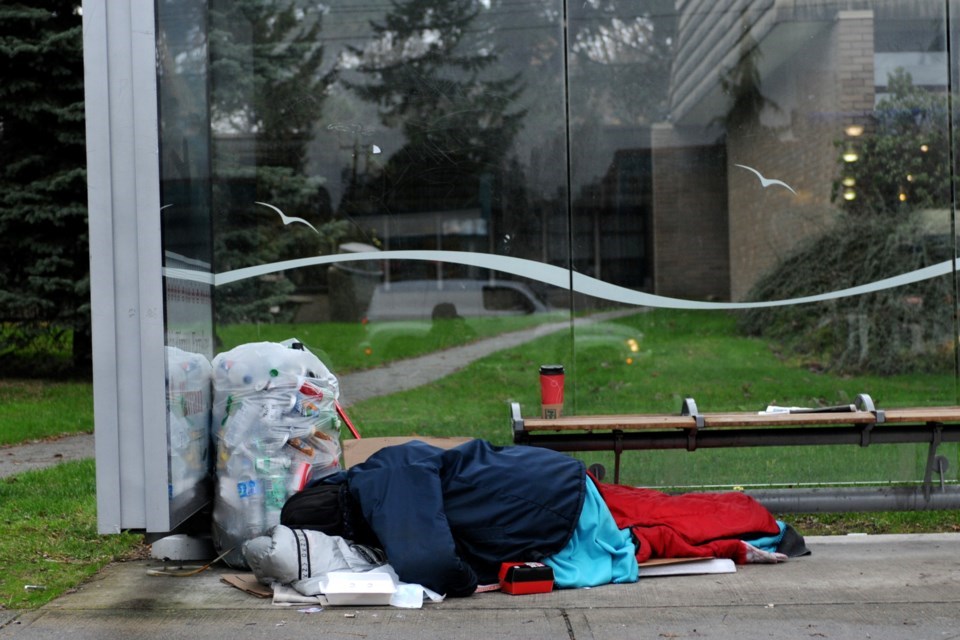Sandra Singh’s assessment of the homeless population being in the 2,000 range was based on the city’s alternative approach to gathering data normally collected in its annual homeless count in March, which didn’t occur this year and will be cancelled again in 2022.
This year, the city relied on data from its own homeless outreach team, shelter operators, no fixed address income assistance information, calls to the city’s 311 line related to homelessness, statistics provided by outreach providers and a survey conducted by the Downtown Eastside Women’s Centre.
At the same time, the city tracked the number of supportive housing units and shelter beds that opened in ¬È∂π¥´√Ω”≥ª≠since the homeless count in March 2020. That number totalled 737, with the 145-unit Patricia Hotel on East Hastings Street accommodating the most people, followed by the 98-unit Alewem temporary modular housing complex on Vernon Drive.
“This is an impressive number of activations in a relatively short amount of time and the funding support and partnership of the province through BC Housing and funding support from the federal government were both critical to these implementations,” Singh wrote in a Nov. 29 memo now posted on the city’s website.
“One would reasonably expect this to have decreased the number of people experiencing unsheltered homelessness in Vancouver.”
Singh cautioned while the alternative data sources help provide context and some insight into the current state of homelessness in Vancouver, they do not provide “a reliable proxy” to the data collected during the annual point-in-time homeless count.
Further, comparisons within each data source to previous years is difficult because it is unclear if the changes are due to the actual number of people experiencing homelessness or connected to the COVID-19 pandemic, she said.
“For example, an increase in 311 calls may be due to an actual increase in homelessness, or because people are working from home and are more alert to their surroundings and are more likely to report something that they see,” Singh said.
“So, in short, while one can look at the overall trends based on the alternative data sources, one cannot know how they directly relate to the current number of people experiencing homelessness in Vancouver.”
However, Singh pointed out the city’s outreach team served 3,474 people in the first quarter of this year, which represented a 26 per cent increase compared to the previous three-year average.
That data alone suggests to Singh that the rate of homelessness “remains the same or perhaps may have even increased” since March 2020, when volunteers counted 1,548 people living in some form of shelter and 547 on the street.
The uncertainty about the data will remain again next year, with Singh announcing in her memo that the 2022 homeless count will be cancelled because of challenges arising from the pandemic.
Pandemic affecting homeless population, count
The most significant barrier to conducting the count is the training and deployment of more than 500 volunteers, whose work includes conducting surveys of homeless people they meet.
“As we are not currently seeing the return to full volunteerism across the sector and the rates of volunteerism pre-COVID, staff do not believe we would recruit the necessary number of volunteers to complete the count,” Singh said.
The pandemic has had a dramatic effect on people living without a home, with shelters forced to reduce capacity to ensure physical distancing, single-room-occupancy building owners implementing no-guest policies and meal service providers reducing distribution or closing down.
Public spaces such as libraries and community centres, which provide warmth and refuge for people, were also closed for a period of time to adhere to public health orders.
“Over the course of the pandemic, the demand for services, housing and shelter have continued to grow and residents, businesses, and non-profit service providers in communities across the city are expressing concern about increased unsheltered homelessness and associated impacts, including increased garbage, feces, and needles, as well as concern for people struggling with mental health and substance use issues,” Singh said.
“While many restrictions related to COVID have either been lifted or lowered, all levels of government, private and non-profit housing and service providers must continue working together address the unmet need of people living in poverty and disproportionately impacted by COVID.”
Meanwhile, in a separate memo to council, Singh confirmed what ¬È∂π¥´√Ω”≥ª≠ reported Nov. 25 that a “tiny shelter” pilot program will launch in the new year. Ten tiny homes, which will not have washrooms or a kitchen, will be placed on the same property as an existing shelter, which already has those facilities.
Meals, laundry and staff support will also be provided.
Singh did not provide the location but said a report will go before council in February 2022, which will include a detailed budget and implementation plan for the pilot.
@Howellings




